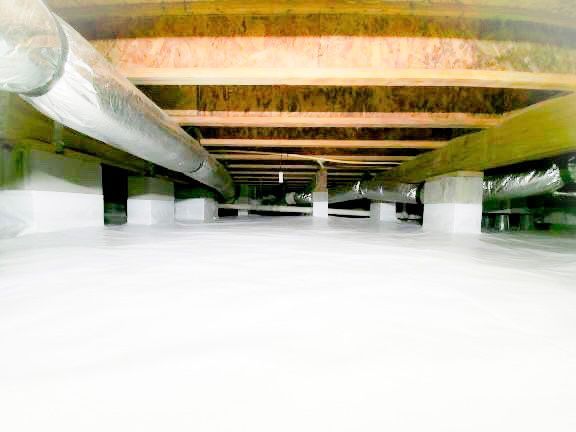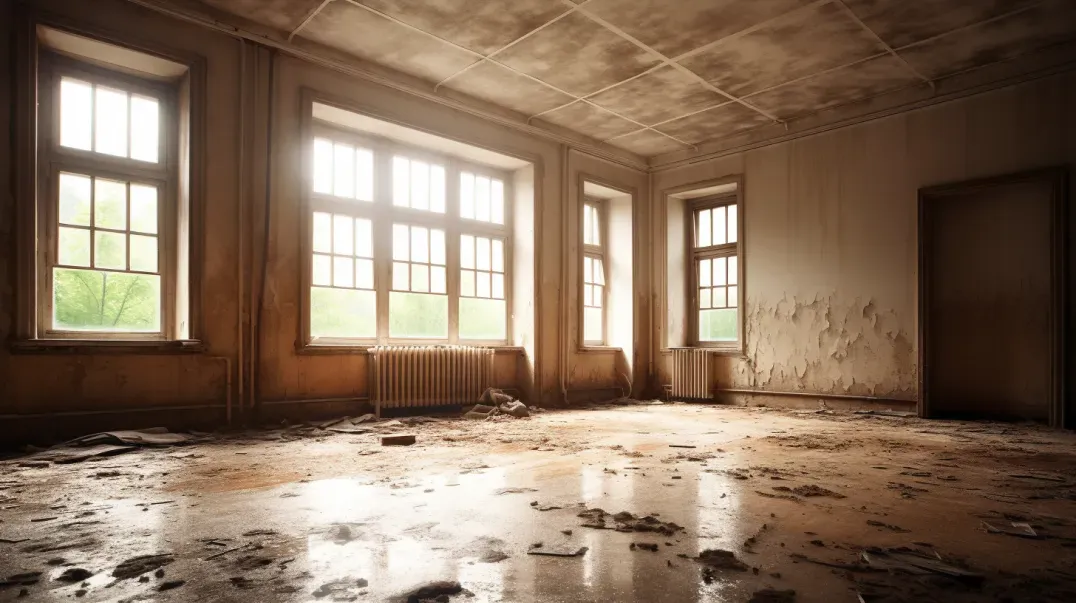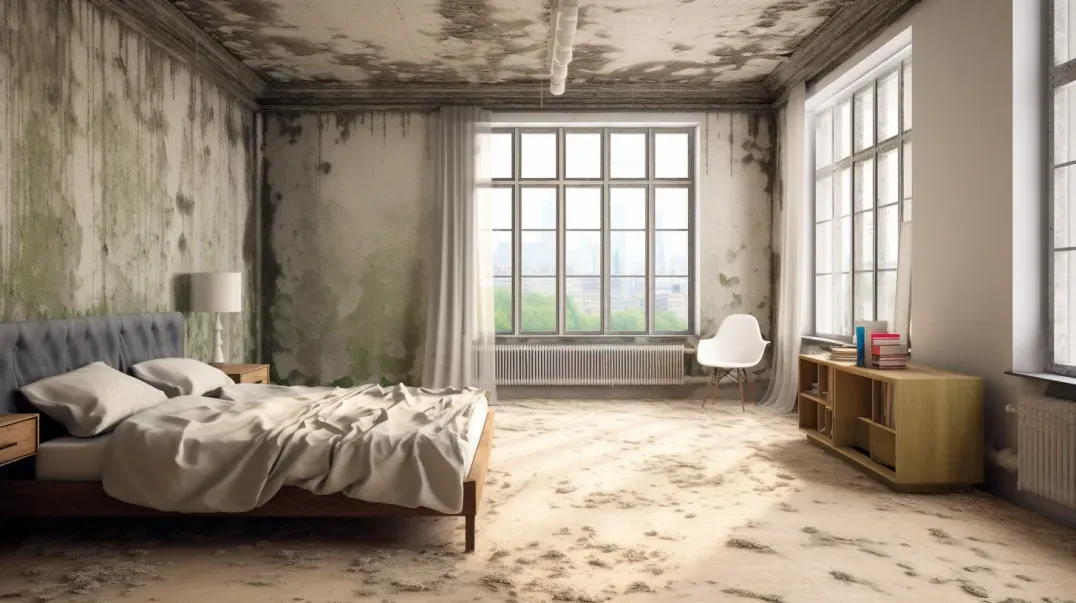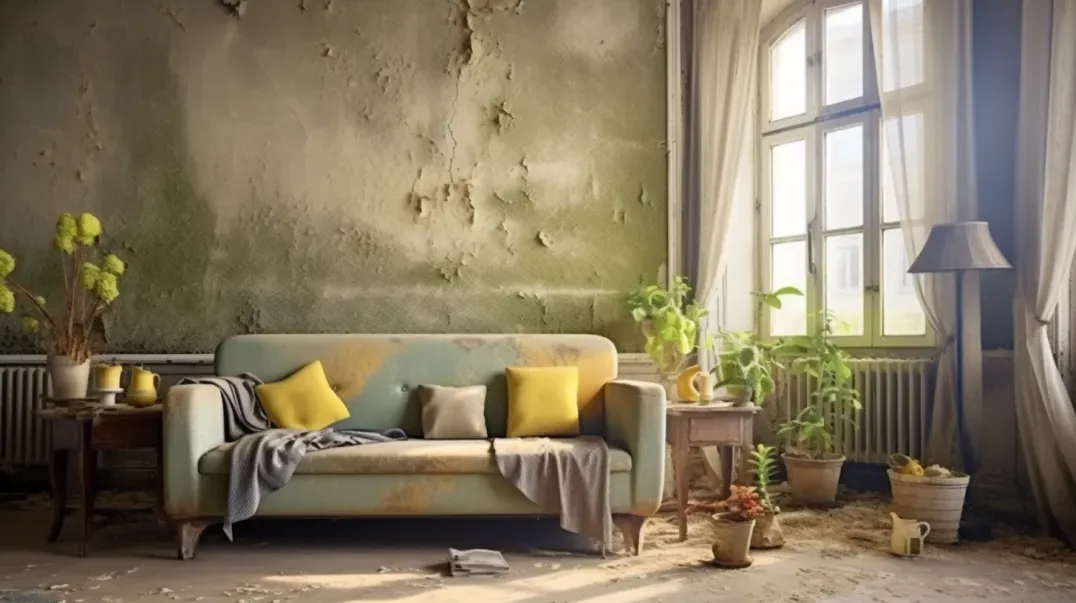Mold Prevention in Historical Buildings
Historical buildings stand as testaments to our architectural heritage, cultural history, and the craftsmanship of bygone eras. However, the very features that lend these structures their unique character and beauty also present distinct challenges in the realm of maintenance and preservation, particularly when it comes to mold prevention. This blog delves into the intricate world of safeguarding historical buildings from the pervasive threat of mold, a task that requires a nuanced understanding of both the buildings' historical significance and the environmental conditions conducive to mold growth.
The preservation of historical buildings involves a delicate balance between maintaining their integrity and implementing modern mold prevention techniques. Unlike contemporary structures, historical buildings often possess unique materials, construction techniques, and architectural details that are more susceptible to moisture accumulation and, consequently, mold growth. The challenge lies in addressing these vulnerabilities without compromising the buildings' historical authenticity or causing irreversible damage.
This blog aims to shed light on the unique challenges of mold prevention in historical buildings, exploring the factors that contribute to mold growth in these structures and offering insights into sustainable and sensitive approaches to mold management. From the complexities of improving ventilation without altering historic facades to the intricacies of choosing mold-resistant materials that align with conservation principles, we will navigate the multifaceted process of protecting these cherished landmarks from the damaging effects of mold.
Join us as we explore the intersection of historical preservation and mold prevention, offering guidance to conservators, property managers, and historical building enthusiasts on maintaining the health and longevity of these irreplaceable structures. Through a combination of expert knowledge and respect for historical integrity, we can ensure that these buildings continue to tell their stories for generations to come.
Understanding Mold in Historical Buildings
Historical buildings, with their rich heritage and architectural beauty, also bear the brunt of time, often making them susceptible to various environmental challenges, including mold growth. Understanding the unique factors that contribute to mold in these older structures and recognizing the potential damage mold can inflict is crucial for effective preservation efforts. This section delves into the common characteristics of historical buildings that predispose them to mold issues and examines the impact of mold on their historical materials and architectural integrity.
Factors Contributing to Mold in Older Structures
Historical buildings are particularly prone to mold growth due to several inherent characteristics:
- Construction Materials: Many historical buildings were constructed with organic materials that provide food for mold. Wood, plaster, and natural fiber wallpapers can absorb moisture, creating ideal conditions for mold growth.
- Insufficient Ventilation: Modern HVAC systems, designed to control humidity and improve air circulation, are often lacking in older buildings. The original ventilation methods, if still in use, may not suffice to manage moisture effectively in today's environment.
- Aging Infrastructure: Over time, roofing, plumbing, and drainage systems can deteriorate, leading to leaks and water intrusion. These issues may go unnoticed until significant damage has occurred, providing ample moisture for mold to thrive.
- Historical Preservation Constraints: Efforts to preserve the authenticity of historical buildings can limit the extent to which modern mold prevention techniques can be implemented, complicating moisture management.
The Impact of Mold on Historical Buildings
Mold poses a significant threat to the preservation of historical buildings, impacting them in several ways:
- Deterioration of Materials: Mold can cause irreversible damage to the organic materials common in historical buildings, such as wood, paper, and textiles. Over time, mold can weaken these materials, leading to structural damage.
- Loss of Historical Integrity: Cleaning mold from delicate surfaces and artifacts can be challenging. Aggressive mold removal techniques may further damage historical materials, while gentler methods may not fully eradicate the mold, risking further growth.
- Health Hazards: Mold in historical buildings can also pose health risks to occupants and visitors, particularly those with allergies or respiratory conditions. This can limit the building's use and accessibility for public enjoyment and education.
- Economic Impact: The cost of mold remediation in historical buildings can be significant, especially when specialized techniques are required to preserve historical accuracy. Additionally, mold issues can deter tourism and community engagement.
Understanding these factors and impacts is the first step toward developing effective strategies for managing mold in historical buildings. By carefully balancing preservation needs with modern mold prevention techniques, it is possible to protect these treasures for future generations while ensuring their structural integrity and historical significance remain intact.
Assessing Mold Risks in Historical Buildings
Historical buildings, with their unique architecture and construction materials, require a specialized approach to mold risk assessment. Understanding and mitigating the risk of mold in these structures is crucial for their preservation and the health of their occupants. This section outlines the steps for conducting a mold risk assessment tailored to historical buildings and highlights the areas and materials that are most vulnerable to mold growth.
Conducting a Mold Risk Assessment
A thorough mold risk assessment is the first step in protecting historical buildings from the potential damage caused by mold. Here are the essential steps in the assessment process:
- Review Building History and Construction: Start by gathering information on the building's history, including previous mold issues, repairs, and renovations. Understanding the construction materials and methods used in the building can also provide insights into potential mold risks.
- Visual Inspection: Conduct a detailed visual inspection of the building, both inside and out. Look for signs of water damage, leaks, and existing mold growth. Special attention should be paid to areas where moisture is likely to accumulate.
- Moisture Assessment: Use moisture meters to measure humidity levels throughout the building. Identify areas with high moisture levels that could foster mold growth. Pay particular attention to basements, attics, and other areas with poor ventilation.
- Air Quality Testing: Consider conducting air quality tests to detect mold spores, especially if there are concerns about hidden mold. Professional services can provide a detailed analysis of mold spore types and concentrations.
- Document Findings: Keep detailed records of all findings, including photographs, moisture level readings, and notes from visual inspections. This documentation will be crucial for developing a mold prevention and remediation plan.
Identifying Vulnerable Areas and Materials
Certain areas and materials in historical buildings are more susceptible to mold growth due to their nature and the environmental conditions they are exposed to. Identifying these can help prioritize prevention efforts:
Vulnerable Areas:
- Basements and cellars, often subject to dampness and poor ventilation.
- Attics and roof spaces, where leaks can go unnoticed.
- Exterior walls, especially those facing north or in shaded areas where sunlight is limited.
- Bathrooms and kitchens, where humidity levels are typically higher.
Vulnerable Materials:
- Organic materials such as wood, paper (including wallpaper), and textiles.
- Plaster and some types of insulation that can absorb moisture.
- Historic artifacts and furnishings that may be irreplaceable and susceptible to mold damage.
By conducting a comprehensive mold risk assessment and identifying areas and materials at risk, caretakers of historical buildings can implement targeted strategies to mitigate mold growth. This proactive approach is essential for preserving the structural integrity and historical value of these important structures.
Mold Prevention Strategies for Historical Buildings
Preserving the integrity of historical buildings while preventing mold growth requires a nuanced approach that respects the unique characteristics of these structures. Effective mold prevention strategies must consider the delicate balance between modern preservation techniques and the conservation of historical authenticity. This section explores techniques for managing humidity and ventilation, along with recommendations for gentle cleaning and maintenance practices suitable for historical materials.
Balancing Humidity and Ventilation
Maintaining optimal humidity levels and ensuring adequate ventilation are key to preventing mold in historical buildings. Here are techniques that achieve this balance without compromising the building's integrity:
- Use of Dehumidifiers: Portable dehumidifiers can be strategically placed in areas prone to high humidity, such as basements, to reduce moisture levels. Choose units that can be discreetly positioned and do not detract from the building's aesthetic.
- Hygrometers for Monitoring: Install hygrometers in various parts of the building to continuously monitor humidity levels. This allows for targeted interventions before moisture levels become conducive to mold growth.
- Improving Natural Ventilation: Whenever possible, enhance natural ventilation by opening windows or using window fans. For buildings where changes to the structure are not advisable, consider the use of discreet air bricks or vents that do not alter the building's appearance significantly.
- Climate Control Systems: In cases where the historical significance allows, install climate control systems designed to maintain stable temperature and humidity levels, ensuring they are sensitively integrated into the building's fabric.
Gentle Cleaning and Maintenance Practices
Cleaning and maintaining historical buildings to prevent mold requires methods that are effective yet gentle on historical materials:
- Regular Dusting and Vacuuming: Regularly remove dust and debris, which can hold moisture, using soft brushes and vacuum cleaners with HEPA filters to minimize damage to delicate surfaces.
- Mild Cleaning Solutions: For mold spots, use mild, non-abrasive cleaning solutions such as diluted vinegar or soap and water. Always perform a spot test on an inconspicuous area first to ensure the solution does not damage the material.
- Soft Cloth and Sponges: Use soft cloths or sponges to apply cleaning solutions gently. Avoid scrubbing vigorously, which can harm surfaces or remove historical finishes.
- Professional Conservation Cleaning: For valuable or highly sensitive items, consult with conservation professionals who specialize in the care of historical materials. They can provide or recommend cleaning and maintenance practices tailored to the specific needs of the item.
Implementing these mold prevention strategies allows caretakers of historical buildings to protect these treasures from the damaging effects of mold. By carefully balancing humidity and ventilation and adhering to gentle cleaning and maintenance practices, it is possible to preserve the historical integrity of these buildings while ensuring they remain safe and healthy environments for all who enjoy them.
Preservation-Friendly Mold Remediation
Mold remediation in historical buildings presents a unique set of challenges, requiring a careful balance between eradicating mold and preserving the building's historical integrity. Traditional mold remediation methods may not always be suitable for historical structures, where the preservation of original materials and features is paramount. This section offers guidelines for selecting preservation-friendly mold remediation techniques and highlights the importance of working with preservation experts to ensure the building's historical value is maintained throughout the remediation process.
Choosing Appropriate Remediation Techniques
Selecting the right mold remediation techniques for historical buildings involves considering the building's unique characteristics and the potential impact of remediation methods on its historical materials. Here are some guidelines for making preservation-friendly choices:
- Non-Destructive Techniques: Opt for non-destructive mold removal methods whenever possible. Techniques such as HEPA vacuuming and gentle cleaning with mild, non-toxic solutions can remove mold without damaging historical surfaces.
- Moisture Control: Address the underlying moisture issues that led to mold growth without altering the building's historical fabric. This may involve improving drainage around the building, repairing leaks with historically accurate materials, or using dehumidifiers in a discreet manner.
- Material-Specific Approaches: Tailor the remediation approach to the specific materials affected by mold. For example, wood, plaster, and textiles each require different cleaning methods and solutions to effectively remove mold without causing harm.
- Minimal Chemical Use: Avoid or minimize the use of harsh chemicals and biocides, which can damage historical materials and leave harmful residues. Instead, focus on physical removal methods and natural, non-toxic cleaning agents.
Working with Preservation Experts
The involvement of historical preservation experts is crucial in any mold remediation project within a historical building. These professionals bring a deep understanding of historical materials and preservation techniques, ensuring that mold remediation efforts do not compromise the building's integrity:
- Expert Assessment: Preservation experts can assess the extent of mold damage and recommend remediation strategies that are both effective and sensitive to the building's historical value.
- Guidance on Preservation Standards: They can provide guidance on compliance with local, state, and national preservation standards, ensuring that remediation efforts meet regulatory requirements.
- Specialized Knowledge: Preservation experts possess specialized knowledge in the care and restoration of historical materials, offering insights into the best practices for cleaning and repairing mold-damaged items.
- Collaboration with Remediation Teams: By working closely with mold remediation professionals, preservation experts can oversee the project, ensuring that all actions taken are in the best interest of preserving the building's historical significance.
Preservation-friendly mold remediation is a collaborative effort that requires careful planning, a deep respect for historical integrity, and a commitment to maintaining the building's legacy for future generations. By choosing appropriate remediation techniques and involving preservation experts, caretakers of historical buildings can navigate the complexities of mold removal while safeguarding the building's precious historical value.
Legal and Ethical Considerations
The preservation of historical buildings is governed by a complex interplay of legal and ethical considerations, particularly when addressing issues like mold remediation. These structures are not only architectural treasures but also repositories of cultural heritage, necessitating a careful approach to their maintenance and preservation. This section delves into the legal framework surrounding the preservation of historical buildings and discusses the ethical considerations inherent in mold remediation efforts within these cherished spaces.
Navigating Preservation Laws and Regulations
The preservation of historical buildings is subject to a variety of laws and regulations at the local, state, and national levels. Understanding this legal framework is crucial for anyone involved in the maintenance and preservation of historical properties:
- Historic Preservation Laws: Many countries have specific laws designed to protect historical buildings and sites. These laws often require that any alterations or repairs, including mold remediation, be carried out in a manner that preserves the building's historical character.
- Local and State Regulations: In addition to national laws, local and state regulations can impose additional requirements on the preservation of historical buildings. These may include restrictions on the types of materials and methods used in mold remediation.
- Compliance and Permits: Before undertaking any mold remediation in a historical building, it is essential to consult with local preservation authorities to ensure compliance with all relevant laws and regulations. This may involve obtaining special permits or approvals.
- Incentives and Grants: Some jurisdictions offer incentives, grants, or tax breaks for the preservation of historical buildings, which can include funding for mold remediation efforts that adhere to preservation standards.
Ethical Considerations in Mold Remediation
Beyond the legal requirements, there are significant ethical considerations in balancing the need for mold remediation with the preservation of historical integrity:
- Preservation of Original Materials: Whenever possible, mold remediation efforts should strive to preserve original building materials, respecting the building's historical and cultural significance.
- Minimal Intervention: The principle of minimal intervention suggests that mold remediation should be as unobtrusive as possible, avoiding unnecessary alterations or damage to historical features.
- Documentation and Research: Ethical preservation practices involve thorough documentation of the building's condition before, during, and after mold remediation, along with research into historically accurate materials and methods for any necessary repairs.
- Public Interest and Accessibility: There is an ethical obligation to consider the public interest in accessing and appreciating historical buildings. Mold remediation should not only address health and safety concerns but also ensure that the building remains a viable resource for education and cultural enrichment.
Navigating the legal and ethical considerations in the preservation of historical buildings requires a thoughtful and informed approach. By adhering to preservation laws and regulations and embracing ethical principles in mold remediation, caretakers of historical buildings can ensure that these important structures are preserved for future generations while maintaining their safety and integrity.
FAQs
Contact Lowcountry Crawlspaces Today!
Lowcountry Crawlspaces will do everything we can to ensure your experience with us is excellent.
Request A FREE Estimate
CHECKOUT RECENT POST



Schedule Your FREE Crawl Space Evaluation Today
There Is No Crawl Space Job We Can’t Fix!




